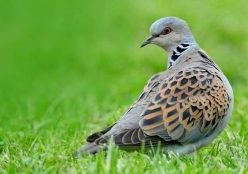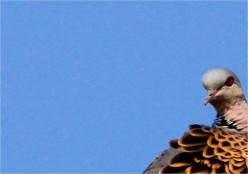Turtle doves are the UK’s fastest declining bird species and they are threatened with global extinction (IUCN Red List of Endangered Species).
Turtle doves are a vibrant, dainty species of dove (weighing in at around 140 grams) with a charismatic turrrturrr-ing call from which its name derives (click here to listen). In the UK it feeds in open habitats most commonly on arable and mixed farmland, where its staple food of wildflower seeds and farmed crop grains are found on the ground. Near to its feeding grounds, the species nests and roosts in open woodland edges, hedgerows and scrub areas.
Turtle doves are the only long distance migratory dove species in Europe, with their more common relatives such as the collared dove and wood pigeon staying in the UK year-round. They complete annual migrations from their breeding grounds, leaving in mid-late summer, through western Europe to their wintering grounds in West Africa; they typically return to their breeding grounds during April. The UK has around 2,000 breeding pairs of turtle dove according to their last national population survey in 2021. The best chance you have to see the species is in East Anglia and South-east England, where the species has maintained its highest densities.
The full name for the species of turtle dove we get in the UK is the European turtle dove (Streptopelia turtur). There are 5 other species of turtle dove living around the world, out of a total of some 350 species in the dove and pigeon family alive today; 17 species of this family have already faced extinction because of humans, notably including the dodo and passenger pigeon.
photo credit: Jonny Rankin








